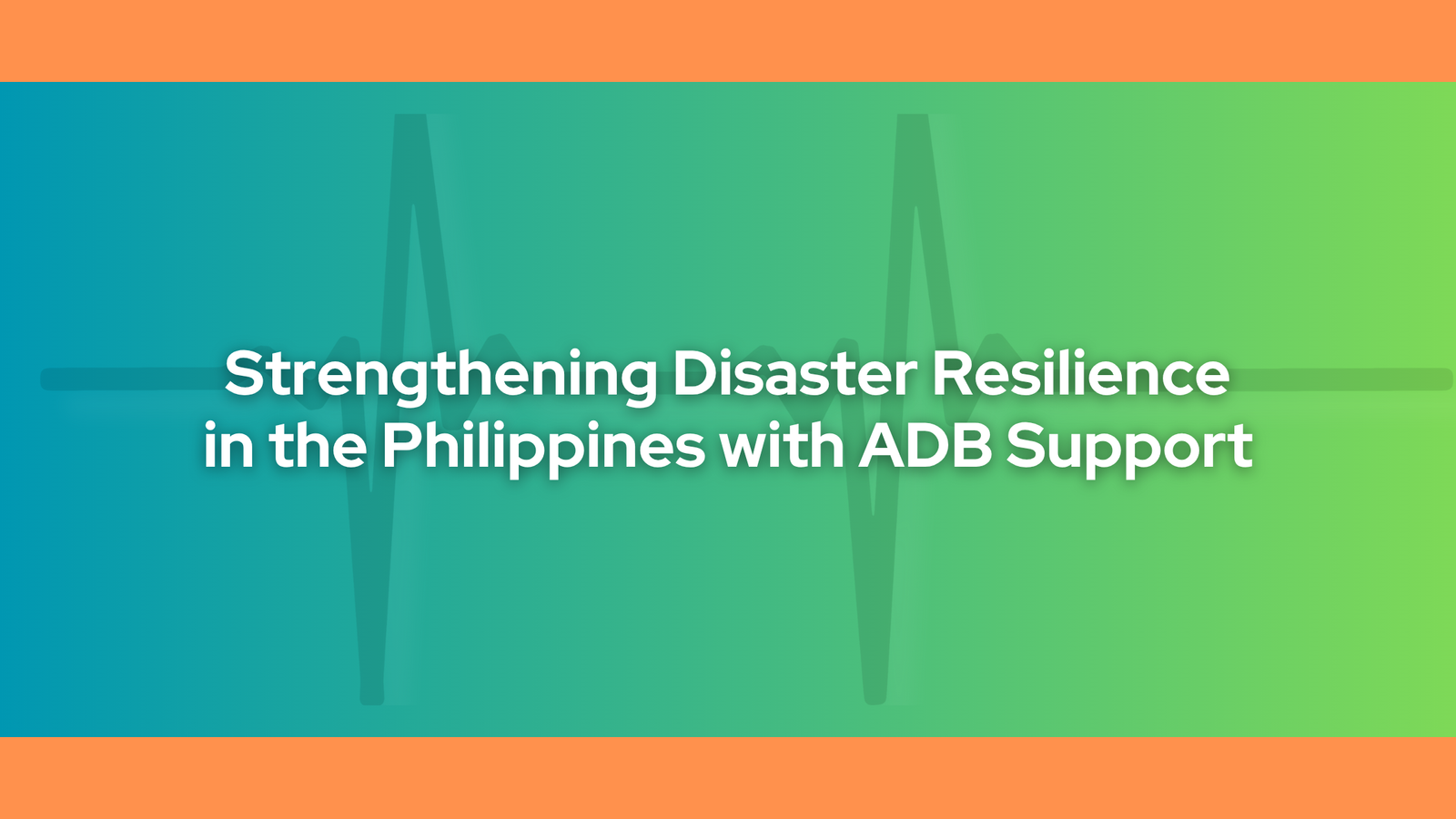
Because of its location and topography, the Philippines is one of the disaster hot spots in the world. From typhoons, floods, earthquakes, and landslides, calamities are not strangers to the Filipino people. As climate change intensifies extreme weather events, disaster resilience in the Philippines has to be improved. With people’s lives, jobs, and infrastructure on the line, there is an urgent need for better long-term climate adaptation plans.
Addressing this growing concern, the Asian Development Bank (ADB) granted the Philippines a $500 million policy-based loan in January 2025. This funding comes with quick access during natural disasters or medical-related emergencies. This initiative aims to mitigate the impacts of disasters on the economy and the lives and livelihoods of Filipinos through supporting measures that increase resilience and facilitate prompt response and recovery activities.
The ADB Board may approve restocking the facility twice as part of the multi-year contingent catastrophe financing program known as the Second Disaster Resilience Improvement Program. If there are any unused funds at the end of the original five-year period, loan renewals are permitted.

Pavit Ramachandran, ADB Country Director for the Philippines, pointed out that while the Philippines’ economy is among the fastest-growing in the Southeast Asian region, the country is very vulnerable to different calamities. “With this program, we aim to help boost the country’s capacity for disaster risk reduction and management (DRRM) nationally and locally, including state-owned and controlled corporations; strengthen DRRM policies and frameworks; and attain long-term resilience to lessen the impact of disasters, especially to the most vulnerable sectors,” he added.
The Philippines is one of the most disaster-prone nations in the world because of its location in the typhoon belt and the Pacific Ring of Fire. In 2024, the country encountered 10 typhoons and four tropical storms, which seemed lower compared to the average of 20 typhoons the nation experiences annually. In the same year, a volcanic eruption, a landslide, and a measles outbreak, of which the latter claimed the lives of four, occurred in the country. Add to that the 150 earthquakes of at least magnitude 4 that the nation experiences yearly.

For the third year, the Philippines ranked the highest in disaster risk globally, with a world risk index (WRI) of 46.86, according to GMA News Online. Included in this ranking are 193 nations, all UN member states, and 99% of the world’s population. Focusing on the information presented shows how important it is to transform disaster resilience in the Philippines.
A study by the Harvard Humanitarian Initiative showed that in 2017, Filipinos got an average of 13.5 out of 50 in the disaster preparedness score. In a recent version of the study in 2024, the score jumped by 42%, equaling 19.2. However, with the number of disasters that strike the country, this level of preparedness is still not enough.
As outlined in the PFM roadmap created with ADB’s assistance, the new program aims to integrate DRRM into national public finance management (PFM) reforms and standardize DRRM planning procedures at the national, provincial, and local levels.
Additionally, it aims to improve the disaster response services provided by state-owned or controlled corporations, integrate gender equity, disability, and social inclusion into DRRM plans, and offer additional sources of risk financing, such as a voluntary city parametric disaster insurance scheme that provides quicker payouts for damages from typhoons, earthquakes, and other disasters.